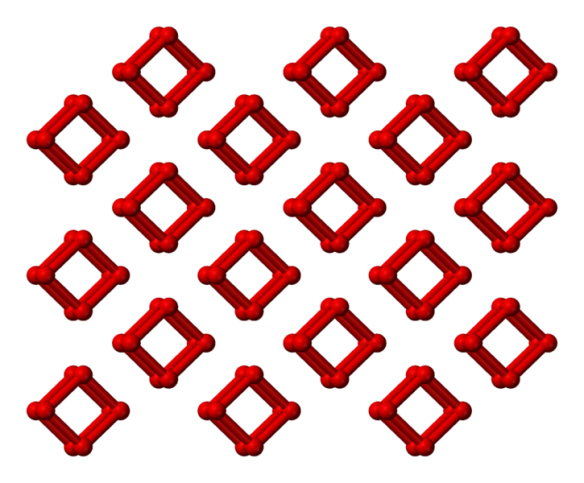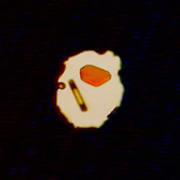The crystal structure rainbow – Red Oxygen
What materials spring to mind when you think of the colours of the rainbow? Today we're starting off a bit of a theme – a crystal structure for every rainbow colour. We are hoping our choices may surprise you!
What does it look like?

What is it?
Oxygen… it's all around us; we breathe it every day in the state that we're very used to seeing it in – a colourless gas. It makes up about 20 % of our atmosphere and without it life as we know if wouldn't be possible. But would it surprise you to know that as a solid it is red? Like many other materials, changing the pressure oxygen is subjected to can dramatically change its physical properties. If you pressurise oxygen to about 5 Gigapascals it will freeze. The crystal structure that it adopts at this point is the same as if you cooled it to about -240 °C and the solid itself has a faint (and almost sky) blue colour to it.

A red crystal of oxygen within a diamond anvil cell. Picture by Serge Desgreniers
BUT, if you keep on with the pressure (and for these sorts of pressure you need your sample to be sandwiched between two diamonds) at about 10 Gigapascals the faint blue crystal will change to be a deep red colour, indicating quite a big change in crystal structure. This material is known as ε-oxygen, and is characterised by its groups of eight oxygen atoms which are bonded together in a cluster.
Where did the structure come from?
Like the gamma RDX structure this result came from undertaking single crystal diffraction measurements while the sample was encased within the diamond anvil cell. The O8 clusters and the monoclinic structure was found by Ludegaard et al. in 2006.






